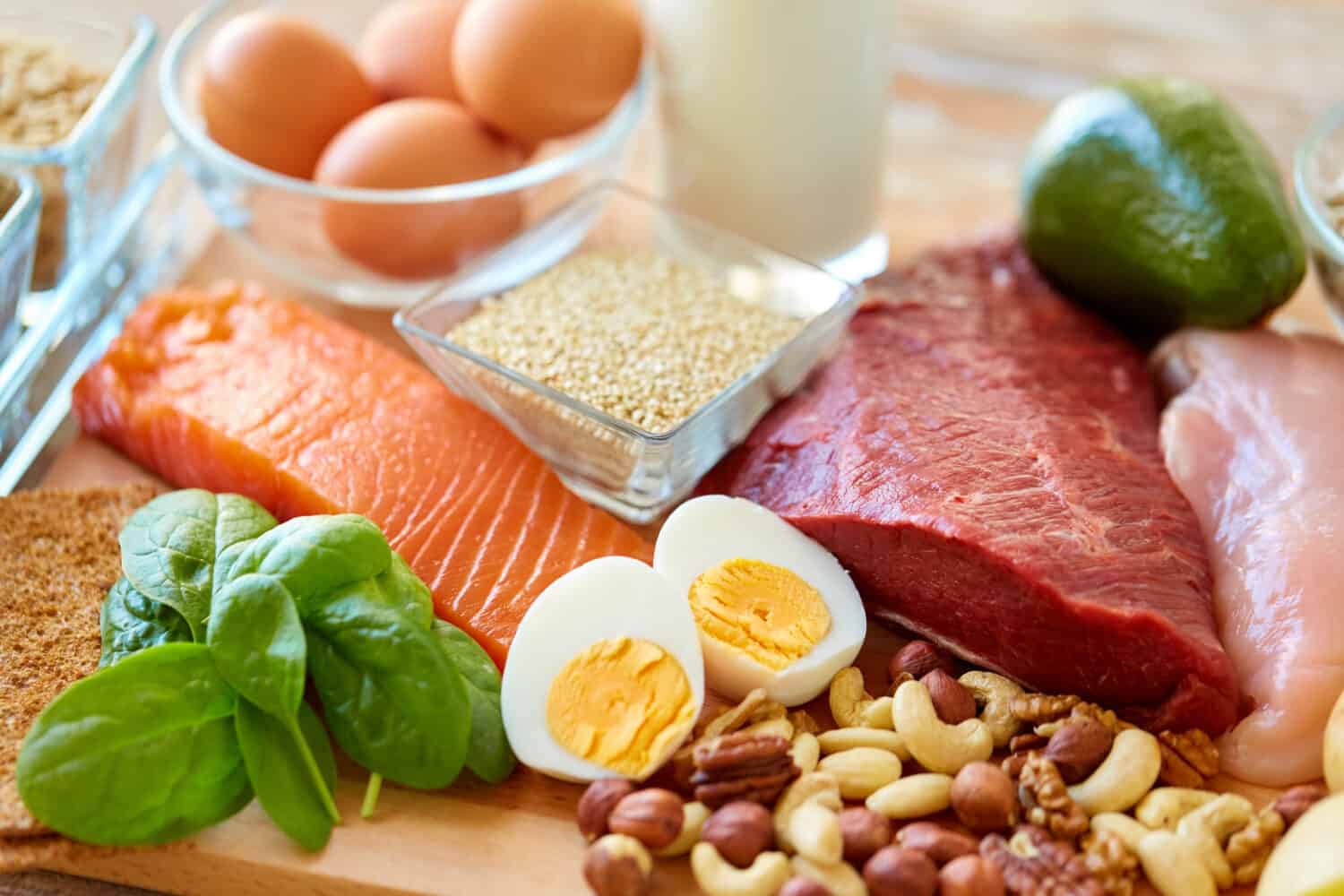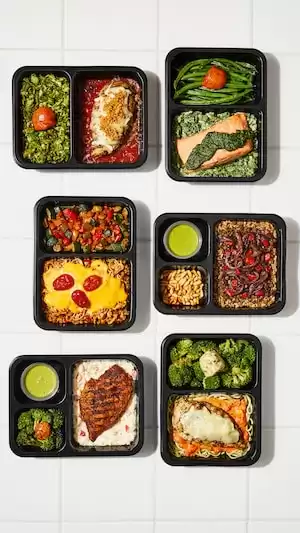If you’re looking for a dieting option to help you lose weight and improve your general health, read on. This simple high-protein diet chart makes so much sense and emphasizes the kinds of foods you should be focusing on. According to Healthline, protein is a macronutrient that is essential to your body’s basic functioning. It is a primary component in the creation, upkeep, and repair of bones, muscles, hair, and skin. Proteins guide the messaging processes between cells and organs, and transport molecules to where they are needed. Many kinds of enzymes, which play thousands of roles within the body, are made from protein. Whatever way you look at it, proteins are super integral to a functioning, healthy system.
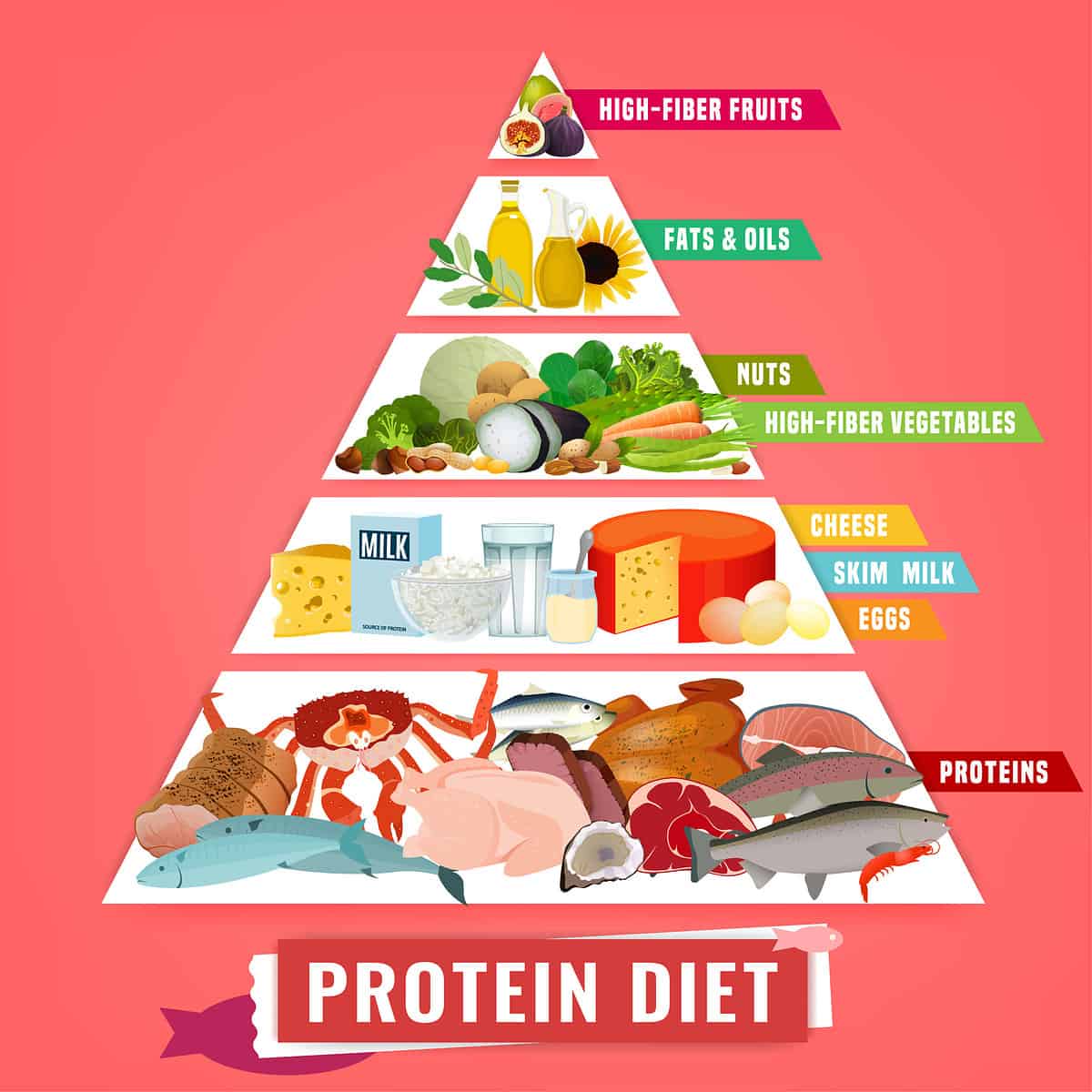
©Double Brain/Shutterstock.com
What Is a High Protein Diet?
So what does a high protein diet have to do with weight loss and health? A high-protein diet can fill you up faster than other macronutrients, and in some cases, it can increase your metabolic intake. Therefore, increasing your protein intake can promote healthy weight-loss, because you’re still getting a lot of nutrients from this diet rather than restricting or starving. Other benefits of higher protein consumption may include an increase in muscle mass, or a retention of muscle mass in older dieters, healthier bones, and faster healing times for wounds or cuts. This diet focuses on the consumption of lots of protein sources, alongside certain dairy products, nuts and high-fiber fruits and vegetables, and fats & oils.
In this post, we’ll break down this simple high-protein diet chart and the foods it recommends. The high-protein diet has likely been practiced since early man. Hunting and gathering for meat and foraged foods was their only food source until other methods of food production developed. Recipes for high-protein diets first started appearing on bookstore shelves in the 1960s/70s, heralded by a man named Dr. Maxwell Stillman. He called this low-fat, high-protein diet, “the Stillman Diet,” but there were many other variations, all of which encouraged high-protein intake to promote weight loss and muscle building (via Encylopedia.com). Modern-day high-protein diets take much more into account in terms of supplemental vitamins and how to balance meal times. Read on to learn more about the modern high-protein diet. You'll get some great recipe ideas, and tips to keep in mind as we go. Happy reading!
The Tiers Of The High-Protein Diet
As you can see from this handy, and oh-so-simple high-protein diet chart, there are specific foods that will best fit a diet of this kind. In this section, we'll cover what kinds of foods you should shop for if you're aiming to participate in a high-protein diet.
High Fiber Fruits
Starting with the top tier of the chart, high-fiber fruits include passion fruits, avocados, guava, berries, pomegranates, and persimmons. Passion fruits contain a whopping 24 grams of fiber, while the others fall between 3-9 grams individually. Eating high-fiber fruits while on a high-protein diet can relieve constipation and reduce cholesterol levels (via GoodRx Health).
Fats & Oils
The second tier of this high-fiber diet chart features fats & oils. The healthiest oils include extra virgin olive oil (EVOO), canola oil, and sunflower oil. EVOO is one of the best oils to consume, with antioxidant properties and vitamin E. It has been linked to increased brain function, and a reduction in the risk for types of cancer, and heart disease. Canola oil has polyunsaturated fat, which is considered a beneficial fat. It also contains vitamin K and vitamin E and may have a role in lowering blood pressure levels. Sunflower oil is a heart-healthy oil that contains linoleic and oleic acids which can strengthen cells and tissues. It is also a good source of vitamin E. These fats and oils will contribute to the overall health benefits of a high-protein diet, especially over other, less healthy options for cooking (think butter!).
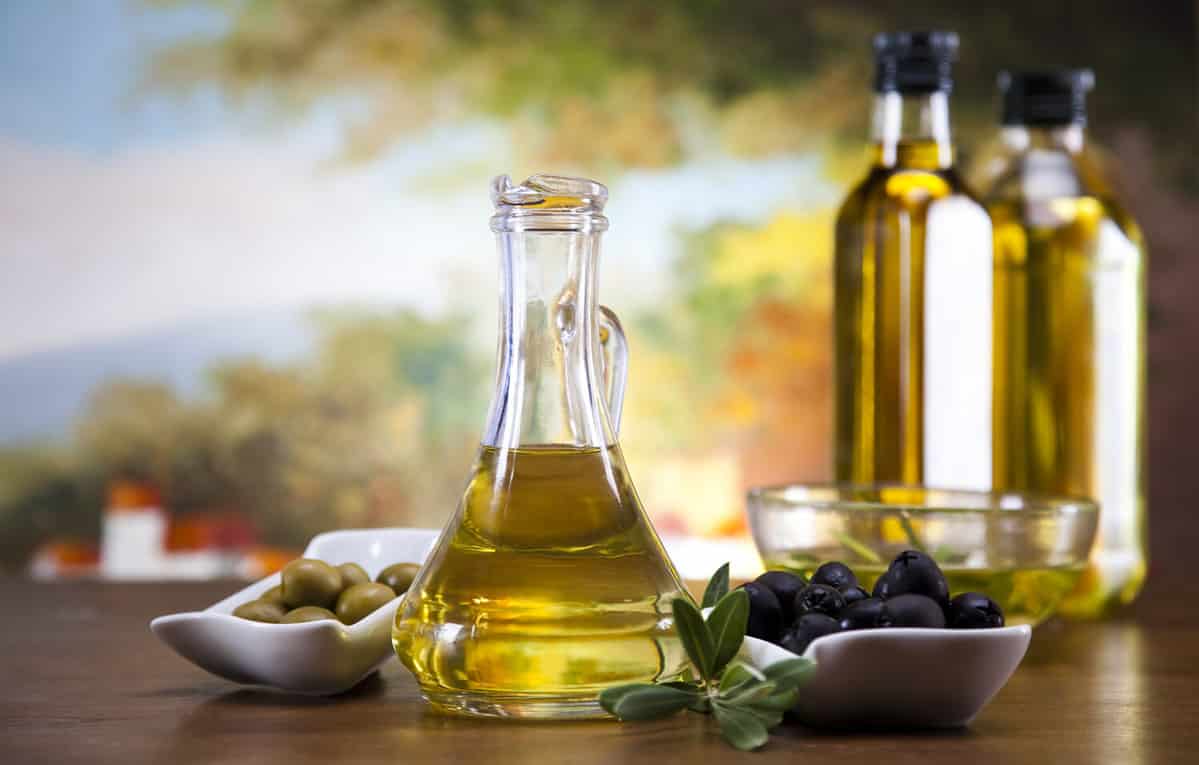
©Sebastian Duda/Shutterstock.com
Nuts, High Fiber Vegetables
The third tier features nuts and high-fiber vegetables. In terms of nuts, we've got 1 ounce of almonds with 6 grams of protein and 3 grams of fiber, and 1 ounce of pistachios with a similar protein and fiber count. 1 ounce of walnuts has around 4 grams of protein and 2 grams of fiber, and cashews with 5 grams of protein and 1 gram of fiber. Other nuts include pecans, macadamia nuts, brazil nuts, hazelnuts, and peanuts (via Healthline).
As for high-fiber vegetables, carrots have 2.8 grams of fiber along with lots of great vitamins. You can get fiber from beets (2 grams), broccoli (2.6 grams), artichokes (5.4 grams), and Brussels sprouts (3.8 grams). You'll also find fiber in kale (4.1 grams), spinach (2.2 grams), and tomatoes (1.2 grams). Beans, peas, lentils, and chickpeas are also good examples of high-fiber options for this diet.
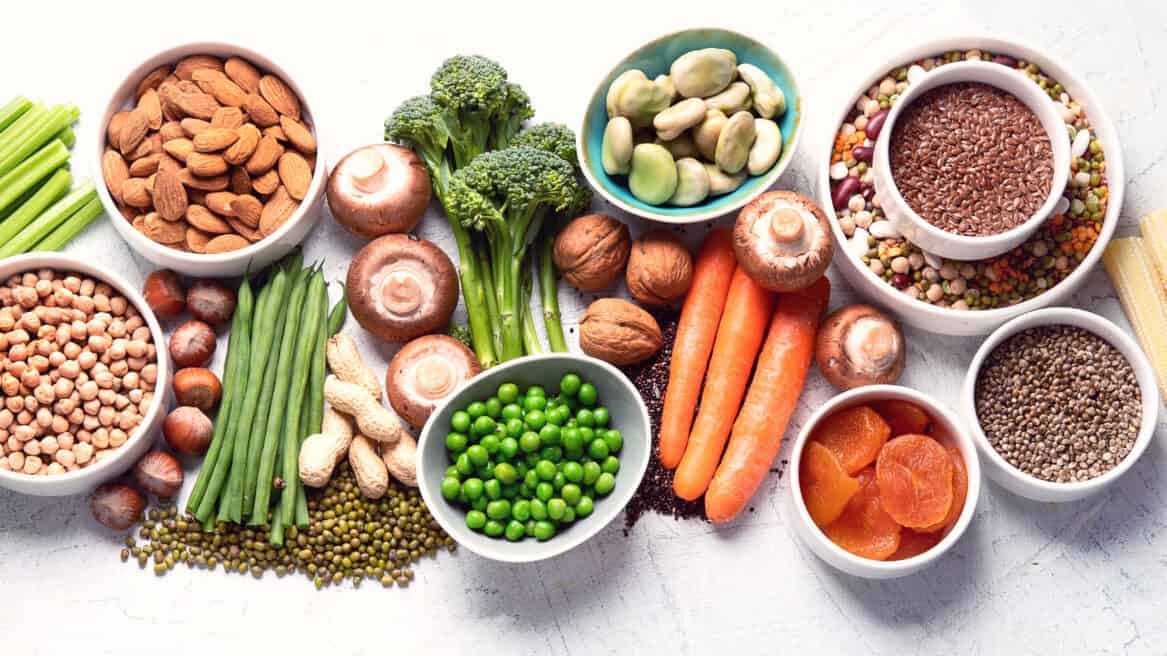
©Tatjana Baibakova/Shutterstock.com
Cheese, Skim Milk, Eggs
Next up we have cheese, skim milk, and eggs. Starting with cheese, the highest protein option is mozzarella with 6 grams. Bleu cheese, feta, cottage cheese, ricotta, and parmesan are also high in protein and are included in this diet. If none of these are quite your speed, try Swiss, cheddar, or goat.
Skim milk that has had the fat content removed. For this reason, it is not creamy, but it is high in calcium and a great source of protein. In fact, according to Healthline, skim milk has the same amount of both protein and calcium content as whole milk, but with far fewer calories and no fat.
Eggs are chock full of vitamins, and protein is contained in both the white and the yolk of the egg. They're good for heart health, and brain functioning. They also have powerful antioxidants that can protect and strengthen your eyes.
Proteins
And finally, the star of the high-protein diet, the proteins. As you can see from the chart, high-protein meats, and seafood include poultry, fish, crab, oysters, and red meats. Lean beef can provide 22 grams of protein in one 3-ounce serving. There are 27 grams of protein in chicken breast and 19 grams of protein in salmon. Other sources of protein in this tier include crab meat, oysters, turkey, duck, veal, pork, and lamb. All these protein sources are variable and should be cooked with the healthiest recipes in mind, but they are very included in this diet (via EatingWell).
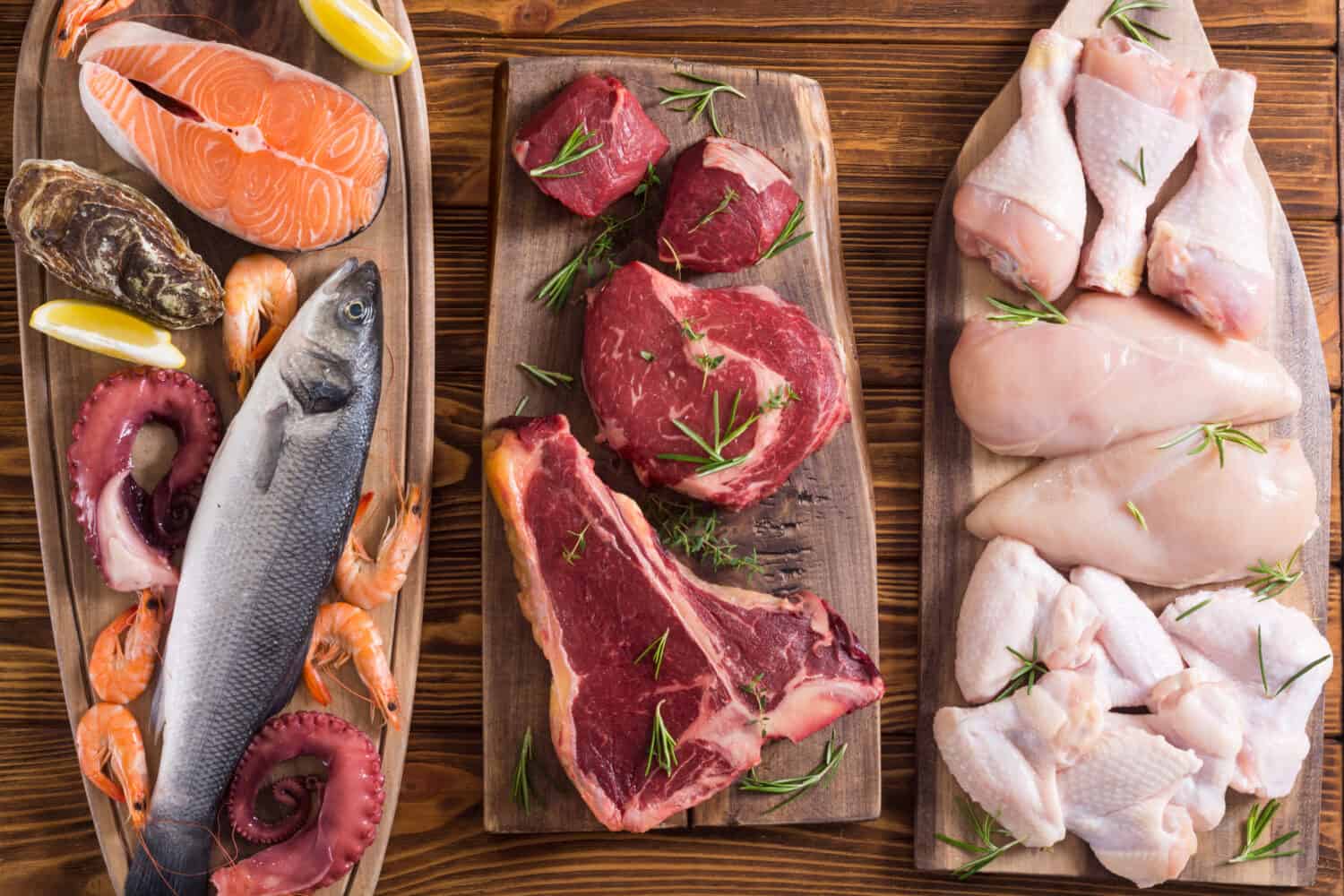
©AlexeiLogvinovich/Shutterstock.com
Recipe Ideas
Check out some of these recipe ideas for the high-protein diet. Some of which are vegan, and vegetarian-friendly. Keep in mind that because the high-protein diet depends so much on high-protein sources you'll have to substitute for plant-based sources. Try tofu, tempeh, and other whole-soy foods.
- Vegan Superfood Grain Bowls
- Raspberry Thyme Chicken Recipe
- Chicken Curry
- Crab Stuffed Chicken Breast
- Fresh Avocado and Cottage Cheese Salad and an orange.
- All Meat Veggie Chili
- Chicken Meatballs with Marinara Sauce
Things To Know
While there are lots of benefits to the high-protein diet, there are also some risks worth understanding. As with all dieting, be sure you're considering vitamin and mineral intake and look into taking supplements. Individuals with kidney disease should not partake in this diet because their kidneys cannot handle a protein increase while maintaining functioning power. Also, individuals susceptible to kidney stones may be at higher risk if consuming high amounts of animal protein on this diet. Basically, if you've ever dealt with kidney-related issues, it's best to confer with your doctor before starting this diet.
The image featured at the top of this post is ©Ground Picture/Shutterstock.com.
